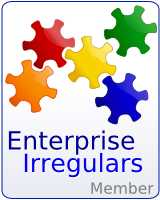Thoughts on Oracle's Stellent acquisition
For more a more in-depth take, especially around the financials, I'd recommend checking out Jason's take.
Basic Info
Deal Announcement: Nov. 2, 2006
Location: : Eden Prairie, MN (HQ)
Founded: 1989
Employees: 560
Total Revenue: $131M (ttm)
Sub Sector: Enterprise Content Management
Price: $440M
Key Customers: Procter & Gamble, Merrill Lynch, Los Angeles County, The Home Depot, British Red Cross, ING, Vodafone, Georgia Pacific, Bayer Corp., Coca-Cola FEMSA, Genzyme Corp.
Information (data & content) management is becoming increasingly important to enterprise technology customers
Products and Services of Stellent
Basic Info
Deal Announcement: Nov. 2, 2006
Location: : Eden Prairie, MN (HQ)
Founded: 1989
Employees: 560
Total Revenue: $131M (ttm)
Sub Sector: Enterprise Content Management
Price: $440M
Key Customers: Procter & Gamble, Merrill Lynch, Los Angeles County, The Home Depot, British Red Cross, ING, Vodafone, Georgia Pacific, Bayer Corp., Coca-Cola FEMSA, Genzyme Corp.
Information (data & content) management is becoming increasingly important to enterprise technology customers
- Regulation and compliance requirements are accelerating the adoption of Enterprise Content Management (ECM) by enterprise customers
- For ERP users, a content enabled application can save time and effort by improving data and content collection
- Avoid “data cleansing” issue
- ECM systems are useful in unlocking and utilization of unstructured data often needed to complete business processes in ERP systems
Products and Services of Stellent
- Stellent’s Universal Content Management has solutions for document management, web content management, information rights management, digital asset management, records and retention management, imaging and governance, risk and compliance (GRC)
Oracle’s Acquisition Rationale
Increase revenue generated from current Oracle customer base
- Customer decision makers and influencers of ECM purchase are the same as for other IT infrastructure areas (middleware, databases). Oracle’s existing relationships will ease the ECM sales process
- IT infrastructure decision makers demand support for true enterprise-wide deployments
- CIOs want to reduce the number of vendors and are showing a preference to source ECM applications from same provider as infrastructure
Oracle currently has a limited ECM suite, but an integrated platform. Stellent’s suite offering is a good complement to Oracle Content Database and will fill in some gaps in the rest of Oracle’s suite
- Oracle has a platform for ECM built on the application infrastructure and RDBMS and is integrated with Fusion Middleware and able to leverage team collaboration, BPM and enterprise search
- Content Services 10g has good Document & Records Management, but is not as strong in other areas of ECM. Oracle was finding it difficult to penetrate ECM market with this offering
- Stellent has broad ECM capabilities (especially strong in web content management and DM for intranets)
- Stellent has a compatible J2EE infrastructure and feature set
- Other IT infrastructure vendors, such as IBM (FileNet), Microsoft and EMC (Documentum) have string presence in the ECM market. Oracle needed to expand breadth of offering in this area to compete
Stellent is a profitable company with a strong customer base
- Price paid fits with Oracle rationale financially. Oracle can likely justify the acquisition cost given the good maintenance base and high renewal rate
- Oracle can likely improve the profitability by reducing costs (e.g., SG&A, S&M)
- By leveraging its sales force, Oracle can increase Stellent sales
- As an example, Oracle sold more G-Log in one quarter after acquisition than G-Log has sold in the entire year previous to the acquisition
- Oracle has made numerous infrastructure-related acquisitions (OctetString, Thor) in the last year. There is much work to be done to provide a truly integrated solution.
- Oracle will be primarily occupied with development / integration work around its Fusion project; ECM integration may not be a priority





